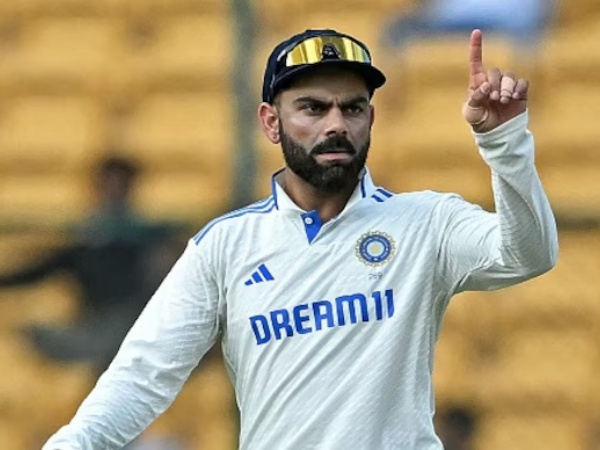views : 855
4 Min Read
Virat Kohli was forced to announce his retirement from Test cricket? Check details
India may find it challenging to fill the crucial No. 4 spot in the Test lineup following Virat Kohli’s retirement from the format. With an illustrious Test career now behind him, Kohli has decided to focus solely on One-Day Internationals moving forward. His decision comes as a surprise, especially with India’s important five-match Test series in England just around the corner. Kohli was widely expected to be part of the squad heading to the UK, but he chose to step away from red-ball cricket nearly a month before the team’s scheduled departure. His absence will be deeply felt, not only because of his consistent performances at No. 4, but also for his leadership and experience in challenging overseas conditions. As India begins to look ahead, the selectors and team management face the tough task of finding a dependable replacement for one of the modern greats in Test cricket.
Was Virat Kohli set to be named interim India Test captain?
However, recent reports suggest that Virat Kohli’s decision to retire from Test cricket may not have been entirely voluntary. According to emerging claims, Kohli was allegedly forced into stepping away from the format following internal tensions within the Indian cricket setup. During the recent Border-Gavaskar Trophy series against Australia, there were discussions within the BCCI about reinstating Kohli as Test captain — a move that hinted at renewed trust in his leadership. However, the plan reportedly fell through due to disagreements behind closed doors.
Sources suggest that a rift may have developed between Kohli and top officials, including chief selector Ajit Agarkar, after the proposed captaincy comeback was shelved. The breakdown in communication and trust could have contributed to what some are now calling a "cold war" between the former skipper and the board. This behind-the-scenes conflict may have played a significant role in Kohli’s sudden and unexpected retirement from Test cricket, despite his still-consistent performances and high fitness standards. While there has been no official confirmation from either party, the speculation adds a dramatic layer to Kohli’s exit and raises questions about the management’s handling of senior players. Fans and cricket pundits alike await further clarity.
"At least people close to him do seem to suggest that he was given sort of a hint that he would be getting the captaincy after Adelaide. But then things changed," said a report.
With the retirement of senior pros Rohit Sharma and Virat Kohli from Test cricket, India now faces the challenge of reshaping its batting order ahead of a crucial tour of England and the start of a new World Test Championship cycle. As has often been the case in his career, wicketkeeper-batter KL Rahul is once again expected to take on multiple roles to lend balance and experience to the side.
Given his impressive track record in overseas conditions, particularly in England, Rahul is likely to be considered for the opener’s slot alongside Yashasvi Jaiswal. His technique and temperament have proven effective in handling the swinging Dukes ball, making him a reliable option at the top of the order. However, when playing in home conditions, where India is more likely to field a different combination, Rahul’s adaptability could see him slot into the middle order — possibly even filling the crucial No. 4 position left vacant by Kohli’s departure. His ability to seamlessly switch roles based on the team's needs makes him a valuable asset during this transitional phase. As India enters a new era in Test cricket, Rahul’s versatility and experience may prove pivotal in maintaining stability across formats and conditions.
Multiple media reports suggest that the Indian squad for the upcoming Test series against England — the first major assignment of the new World Test Championship cycle — is set to be announced on May 23. Among the biggest talking points is the captaincy transition, with Shubman Gill emerging as the frontrunner to succeed Rohit Sharma as India’s next Test captain. Gill, who has been viewed as a future leader in Indian cricket for some time, could now be handed the reins as the team embarks on a new era.
However, the race for leadership is far from settled. KL Rahul, Rishabh Pant, and Jasprit Bumrah are also being considered for leadership roles, bringing their own credentials and experience to the table. Each of them has captained India in some capacity or led in the IPL, making the decision a complex one for the selectors. With the exits of veterans like Rohit and Virat Kohli, India is poised to enter a transitional phase, relying on a younger core to take the team forward. This next generation will not only need to prove their individual skills but also demonstrate maturity and resilience as they carry the legacy left behind by some of Indian cricket’s finest.
